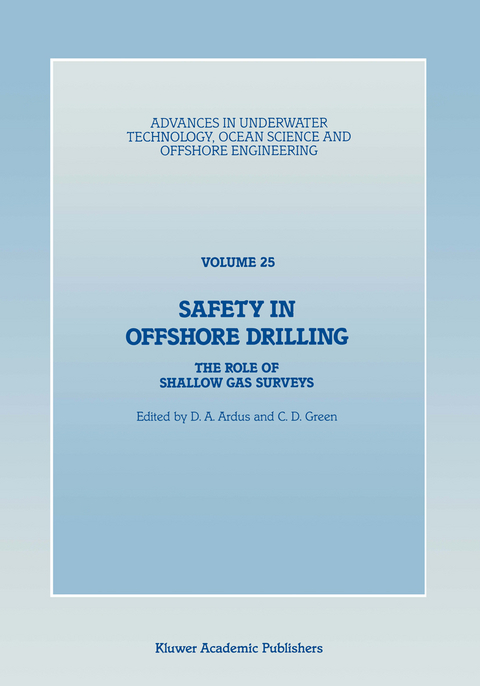
Safety in Offshore Drilling
Springer (Verlag)
978-94-010-6785-0 (ISBN)
I — Introduction.- 1 Current Drilling Practice and the Occurrence of Shallow Gas.- 2 Shallow Gas and Gas Seepages: A Dynamic Process?.- II — Acquisition.- 3 High Resolution Seismic Source Specifications Applications and Misapplications.- 4 Enhanced Seismic Methods for Marine Hazard Surveys.- 5 Field Quality Control of Marine Data Acquisition — Past, Present, Future.- III — Processing, Analysis and Interpretation.- 6 Processing Procedures for High Resolution Seismic Data.- 7 Shallow Gas Detection Using AVO Processing of High Resolution Seismic Data.- 8 Shallow Gas Reservoirs and Migration Paths over a Central North Sea Diapir.- 9 Philosophy of Advanced Interpretations.- 10 Signature — The Future Approach to Reliable Shallow Gas Detection.- IV — Application of Geophysical Data.- 11 Prediction of Shallow Gas From Seismic Data.- V — Procedures, Regulations and Guidelines.- 12 Quantitative Gas Hazard Analysis: Present Limitations and the Way Forward.- 13 UKOOA Recommended Procedures for Mobile Drilling Rig Site Surveys (Geophysical and Hydrographic) — Shallow Gas Aspects.- Rapporteur’s Summary.
| Reihe/Serie | Advances in Underwater Technology, Ocean Science and Offshore Engineering ; 25 |
|---|---|
| Zusatzinfo | 312 p. |
| Verlagsort | Dordrecht |
| Sprache | englisch |
| Maße | 170 x 244 mm |
| Themenwelt | Naturwissenschaften ► Geowissenschaften ► Geologie |
| Naturwissenschaften ► Geowissenschaften ► Hydrologie / Ozeanografie | |
| Technik ► Bergbau | |
| ISBN-10 | 94-010-6785-6 / 9401067856 |
| ISBN-13 | 978-94-010-6785-0 / 9789401067850 |
| Zustand | Neuware |
| Informationen gemäß Produktsicherheitsverordnung (GPSR) | |
| Haben Sie eine Frage zum Produkt? |
aus dem Bereich


